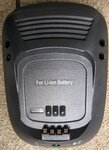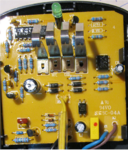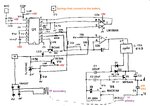ljcox
Full Member level 5
- Joined
- Feb 1, 2006
- Messages
- 252
- Helped
- 25
- Reputation
- 50
- Reaction score
- 23
- Trophy points
- 1,298
- Location
- Melbourne Australia
- Activity points
- 3,110
I have several Bosch battery tools that all use the same batteries & charger. I have 2 chargers, but one failed about 2 years ago & the other one failed yesterday. I therefore want to repair them. But a circuit diagram (schematic) would be helpful. I did an internet search but found nothing useful.
It is a 14.4 ~ 21.6 Volt, 1.5 A charger (see the photo). Underneath it has N153 Q061298. I searched using these numbers & found nothing.
Does anyone have a circuit for this charger? Any assistance will be appreciated
It is a 14.4 ~ 21.6 Volt, 1.5 A charger (see the photo). Underneath it has N153 Q061298. I searched using these numbers & found nothing.
Does anyone have a circuit for this charger? Any assistance will be appreciated






